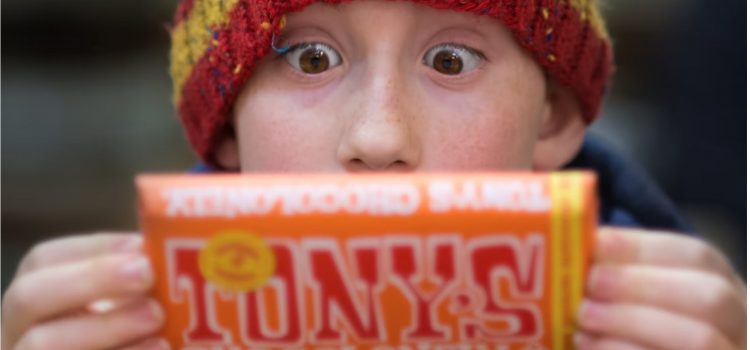
This is a free excerpt from one of Shortform’s Articles. We give you all the important information you need to know about current events and more.
Don't miss out on the whole story. Sign up for a free trial here .
How worried should you be about razor blades in Halloween candy or other forms of tampering? What is Halloween sadism?
From razor blades in Halloween candy to poisoned Pixy Stix to rainbow fentanyl—fear about tainted Halloween candy persists. However, before you get too worried, you should know how much of this urban legend is true.
Read on to learn about the origins of razor blades in Halloween candy, Halloween sadism, and how to tell fact from fiction.
Origins of Razor Blades in Halloween Candy
It’s an issue that crops up every year in one form or another—purported attempts to kill or injure children with tainted Halloween candy. Fear around contaminated Halloween candy can be traced back to a letter to the editor published in The New York Times in 1970. In this letter, a woman raised the idea that someone could put razor blades in Halloween candy, specifically in apples. It was a hypothetical, with no truth behind it, but the story spread like wildfire, and soon enough America was in a panic. Throughout the 1970s and ’80s, police and the media warned parents to examine every piece of trick-or-treating candy before allowing their kids to eat it, and to discard any homemade treats. In some cities, hospitals even offered to X-ray candy to check for razors, pins, and the like. All of this despite the fact that there was never any evidence that anyone had ever actually tampered with a child’s candy.
In this article, we’ll review the backstory of “Halloween sadism.” From razor blades in apples to cyanide in Pixy Stix, we’ll look at the horror stories around Halloween candy that have circulated in America over the last 50 years, and examine the evidence to see what’s true and what’s urban legend.
The DEA Warns of Fentanyl That Resembles Candy
In August, the US DEA published an advisory warning parents to be on the lookout for “rainbow fentanyl,” a drug that could be mistaken for candy. Fentanyl is an opiate that’s highly addictive and can be lethal even in relatively small doses. The drug can come in the form of brightly colored pills, and the DEA claims that this particular form of fentanyl is specifically meant to target children.
But how much truth is there to this? Should you be worried about fentanyl making its way into your kids’ Halloween candy?
What the Evidence Tells Us
Sociologist Joel Best, a leading expert on urban legends, has collected data on Halloween candy incidents for over 30 years, and has authored several books and articles on the topic. In his article The Razor Blade in the Apple: The Social Construction of Urban Legends, he refers to the issue as “Halloween sadism” since the incidents are assumed to be perpetrated by malicious people with no other motive than a desire to harm children. Best says that in years of research, he’s found no evidence that a child has ever died or been seriously injured due to a contaminated Halloween treat, with one exception. In one case, a child died from ingesting cyanide placed in a Pixy stick, but it was later determined that it had been the child’s father who had poisoned him. In another case, a child died from ingesting heroin on Halloween, and it was initially reported as having come from his trick-or-treat candy. But the court later found that the child had gotten the heroin from his uncle’s home. So, in both of these cases, the relative responsible for the child’s death had used the popular Halloween stories to try to cover up their crime.
Urban Legends Can Lead to Moral Panics
Best says, based on the evidence, stories about contaminated trick-or-treat candy are urban legends that have led to an ongoing moral panic. An urban legend (also called a “contemporary” legend) is a story that is told as true even though there’s little to no evidence to support it. If the story is alarming enough, and people believe it, this can lead to a situation in which a widespread unjustified fear spreads among the population, called a moral panic. These panics are sometimes driven by authorities in society, either because they also believe them or to intentionally direct what people worry about. Some of the moral panics we’ve seen over the last 50 years or so include fears around drugs, video games, Satanism, heavy metal music, sex offenders, and human trafficking.
Best points out that these stories reflect the social anxieties of a given time. Heightened fears after September 11, 2001 resulted in warnings to avoid trick-or-treating in malls. In more recent years, fears around legalizing marijuana have sparked concerns about edible THC candies making their way into children’s Halloween goodies. But there is, again, no evidence that this has ever happened.
Considering all of this, how worried should you be about finding fentanyl in your kids’ candy? Is this a different kind of situation? Here’s what the expert says.
Learn to Spot Urban Legends
So, in the interest of better-safe-than-sorry, the DEA article has photos of what rainbow fentanyl looks like if you want to keep an eye out for it. The telltale difference between pills and candy is the imprinted letters and numbers on pills. But what we might want to really be on the lookout for is misinformation. Urban legends and conspiracy theories that provoke moral panics pose a far greater threat than the mythological Halloween sadist. There are many different forms of urban legends, but the ones that get out of hand and cause moral panics usually contain some of the following elements:
- They’re usually spread first by word of mouth before being picked up and exaggerated by the media. You may know of a “friend of a friend” who was a victim, but don’t personally know any victims first-hand.
- The villain of the story belongs to a group that is already characterized negatively in society (which sociologists call a “folk devil”)—for example, Satanists or drug dealers.
- The story contains a cautionary warning that something terrible will happen if you fail to take some action—for example, checking your kids’ Halloween candy.
- They often involve a threat to the most vulnerable, such as children.
- There may be slightly different variations of the story that reflect specific fears at a time—for example, razor blades in Halloween candy vs. drug contamination.
You can also go to snopes.com to check the legitimacy of any stories you hear that may have the above characteristics. And check out the podcast “You’re Wrong About,” which has episodes devoted to debunking many widespread beliefs based on misinformation, including one that discusses Halloween candy panics.
Finally, although the stories around Halloween candy contamination are wildly exaggerated, and fear is probably unwarranted, statistics show that Halloween is indeed the deadliest holiday for children. They’re more than three times as likely to be struck by vehicles on Halloween as on any other night. So, to protect your kids on Halloween, it’s probably best to focus on road safety.

Want to fast-track your learning? With Shortform, you’ll gain insights you won't find anywhere else .
Here's what you’ll get when you sign up for Shortform :
- Complicated ideas explained in simple and concise ways
- Smart analysis that connects what you’re reading to other key concepts
- Writing with zero fluff because we know how important your time is






